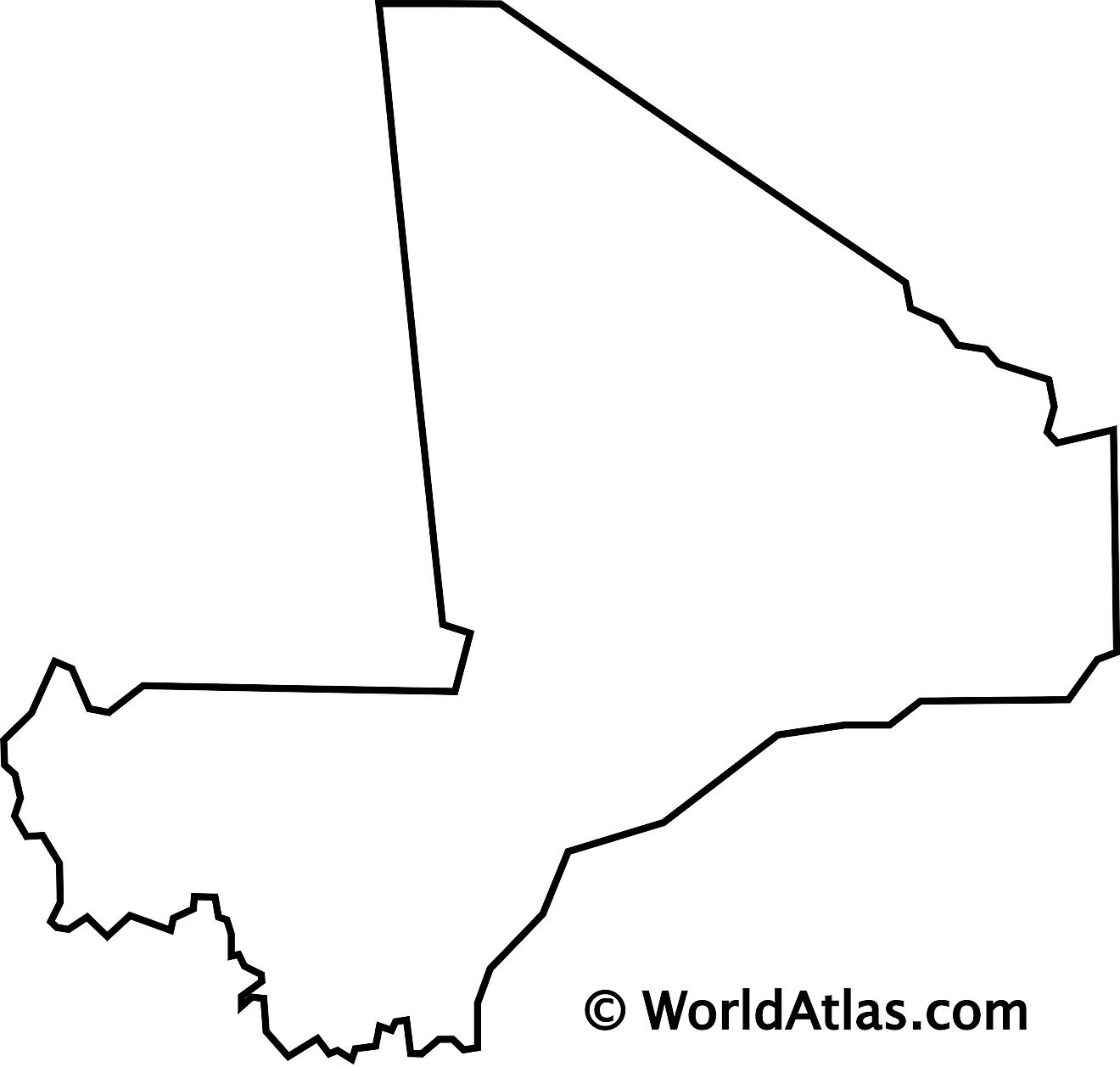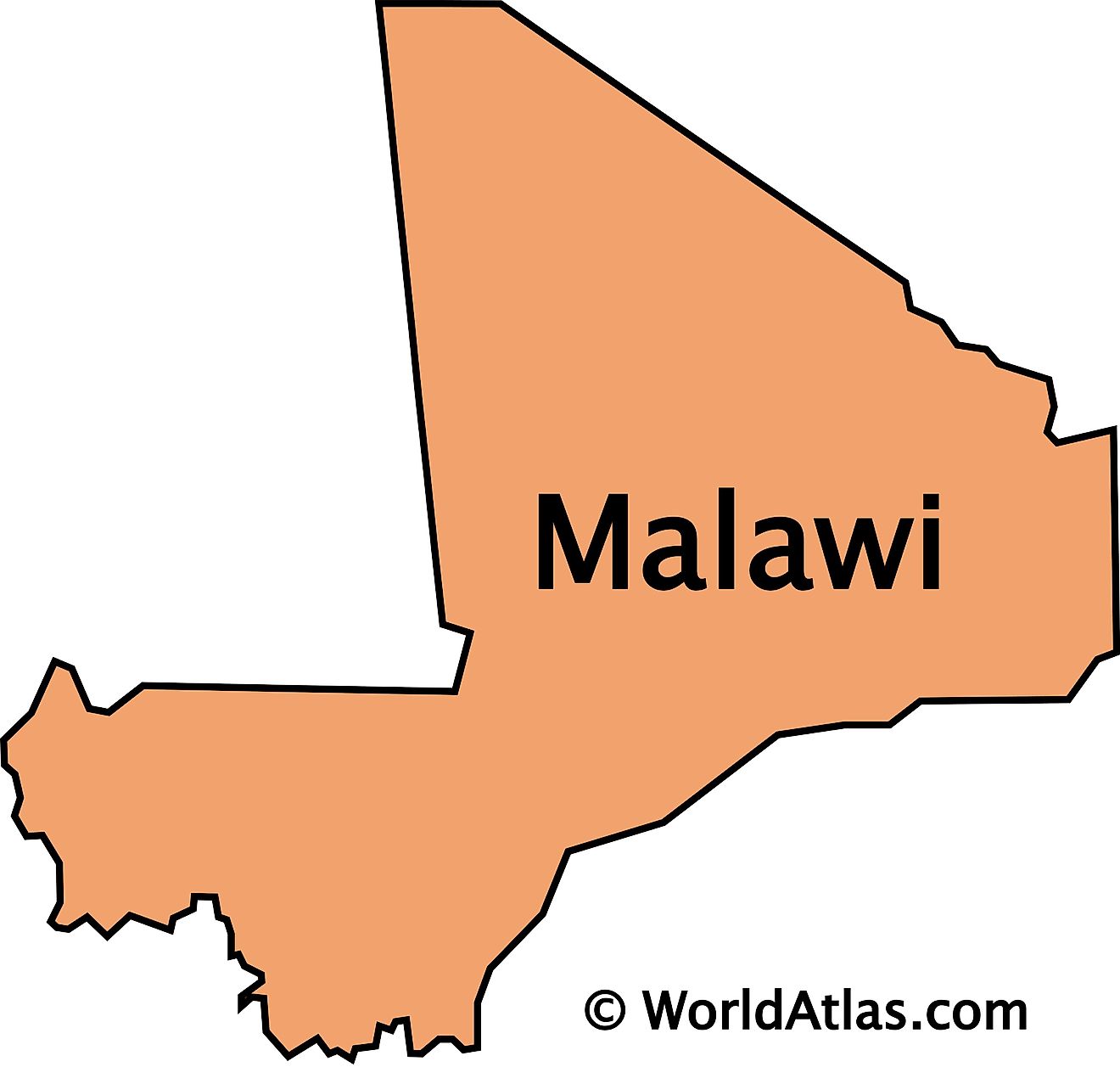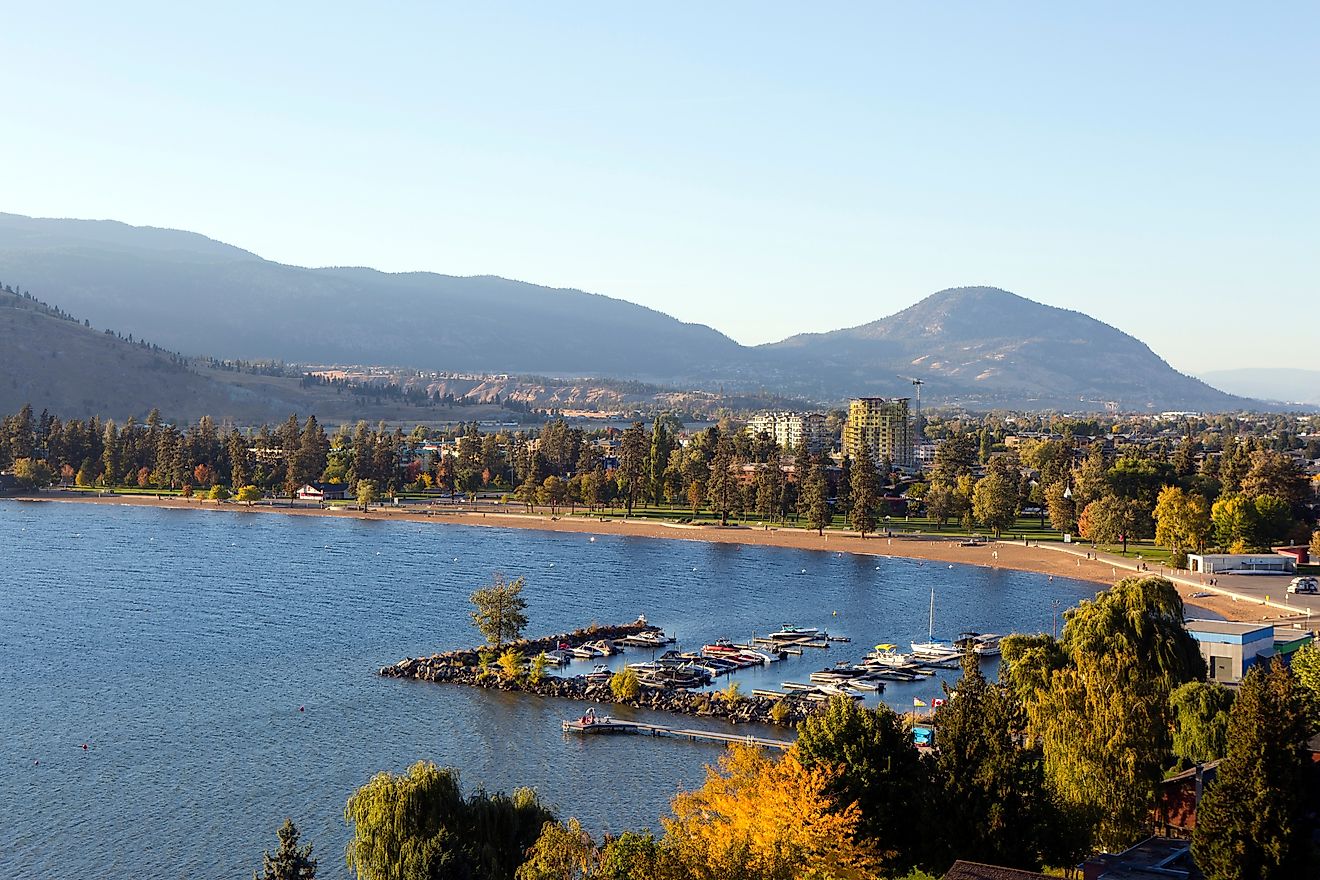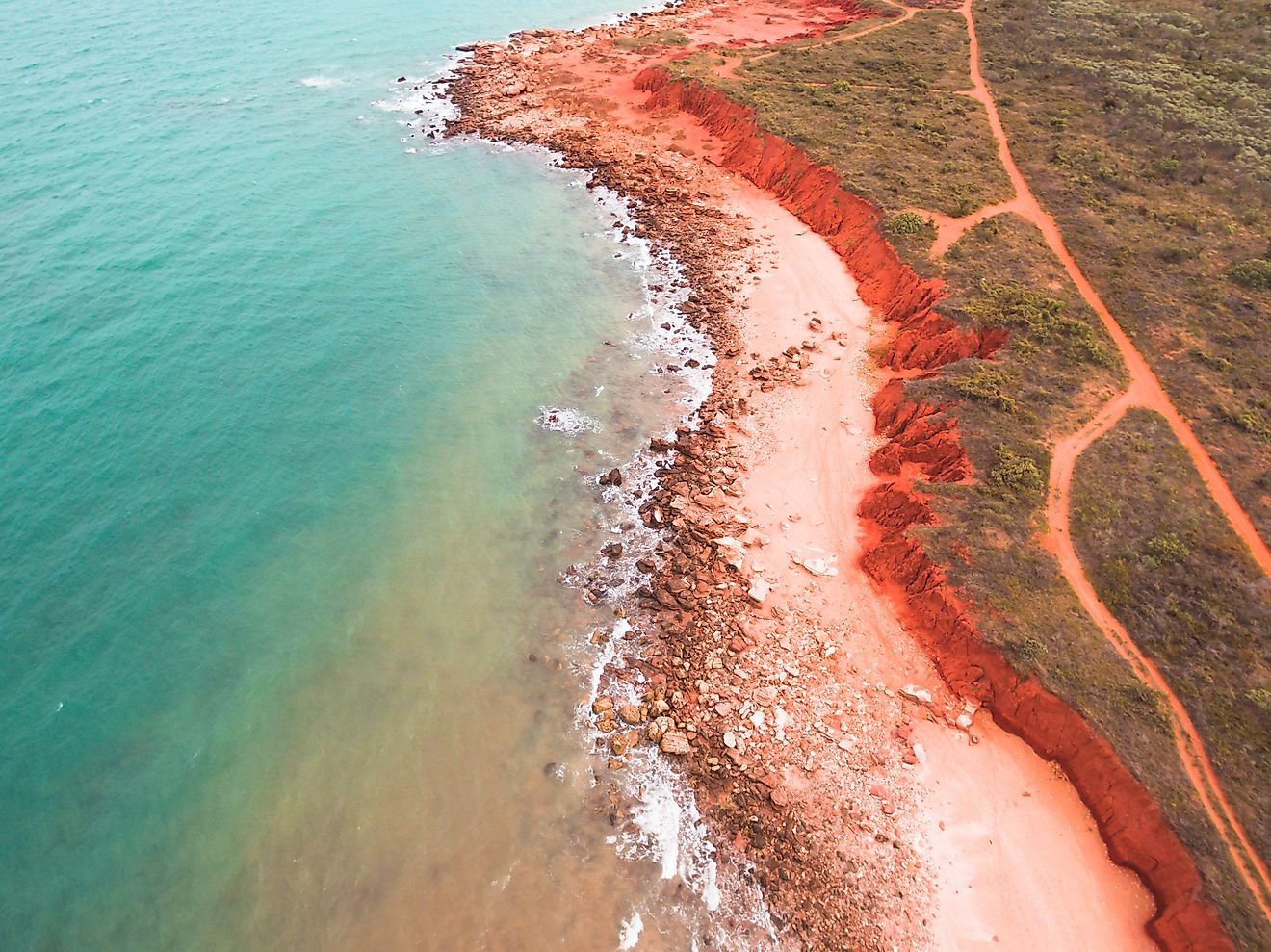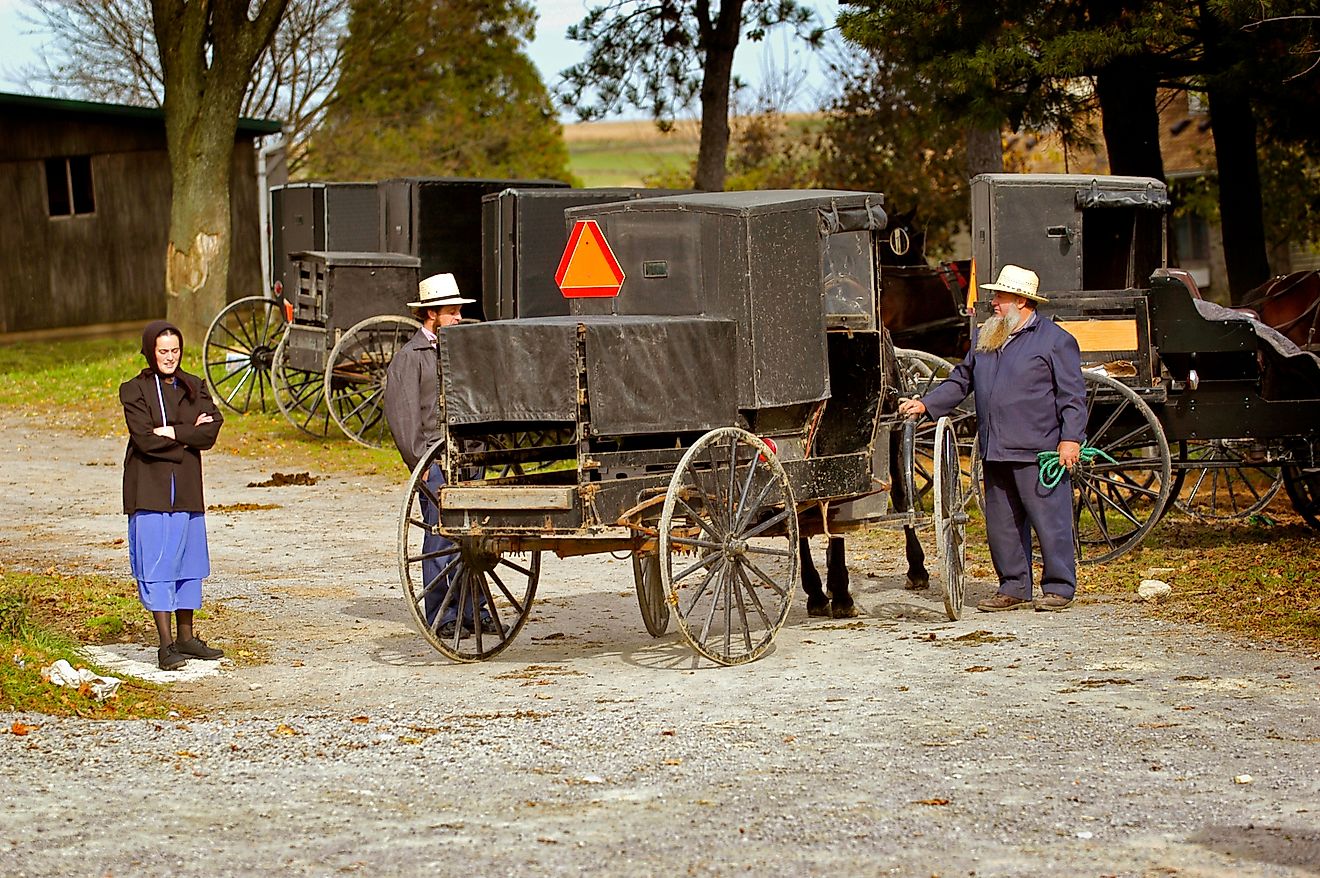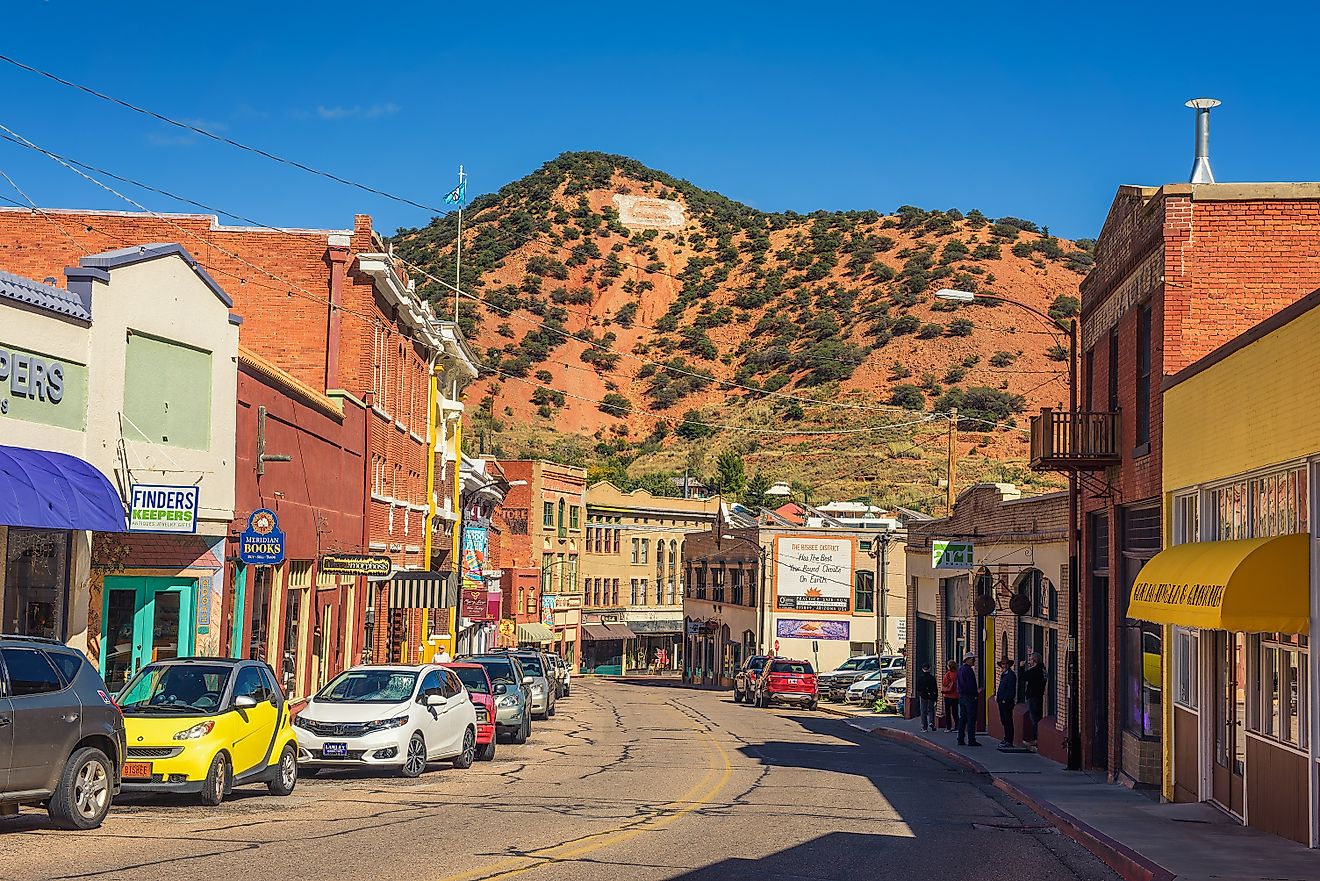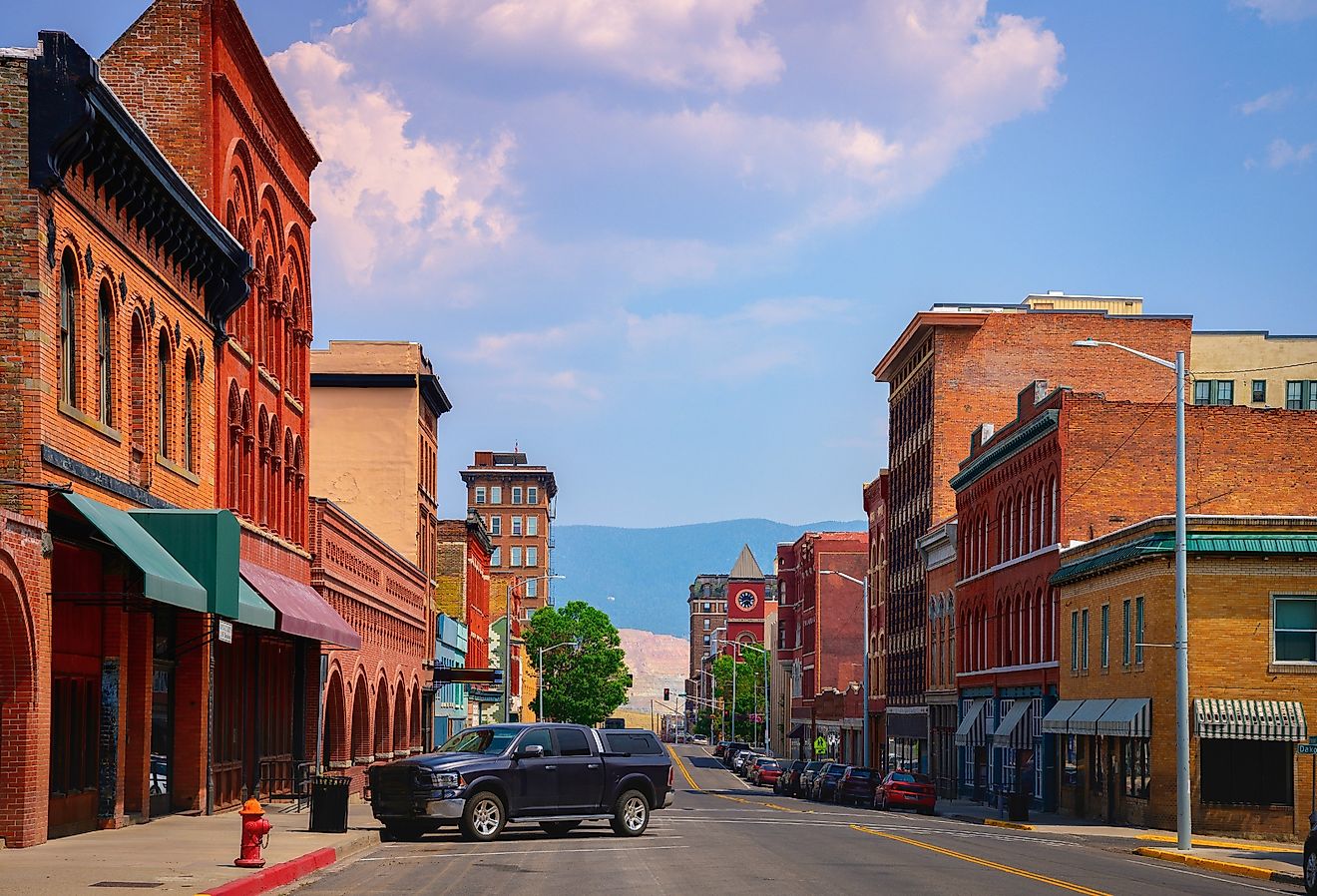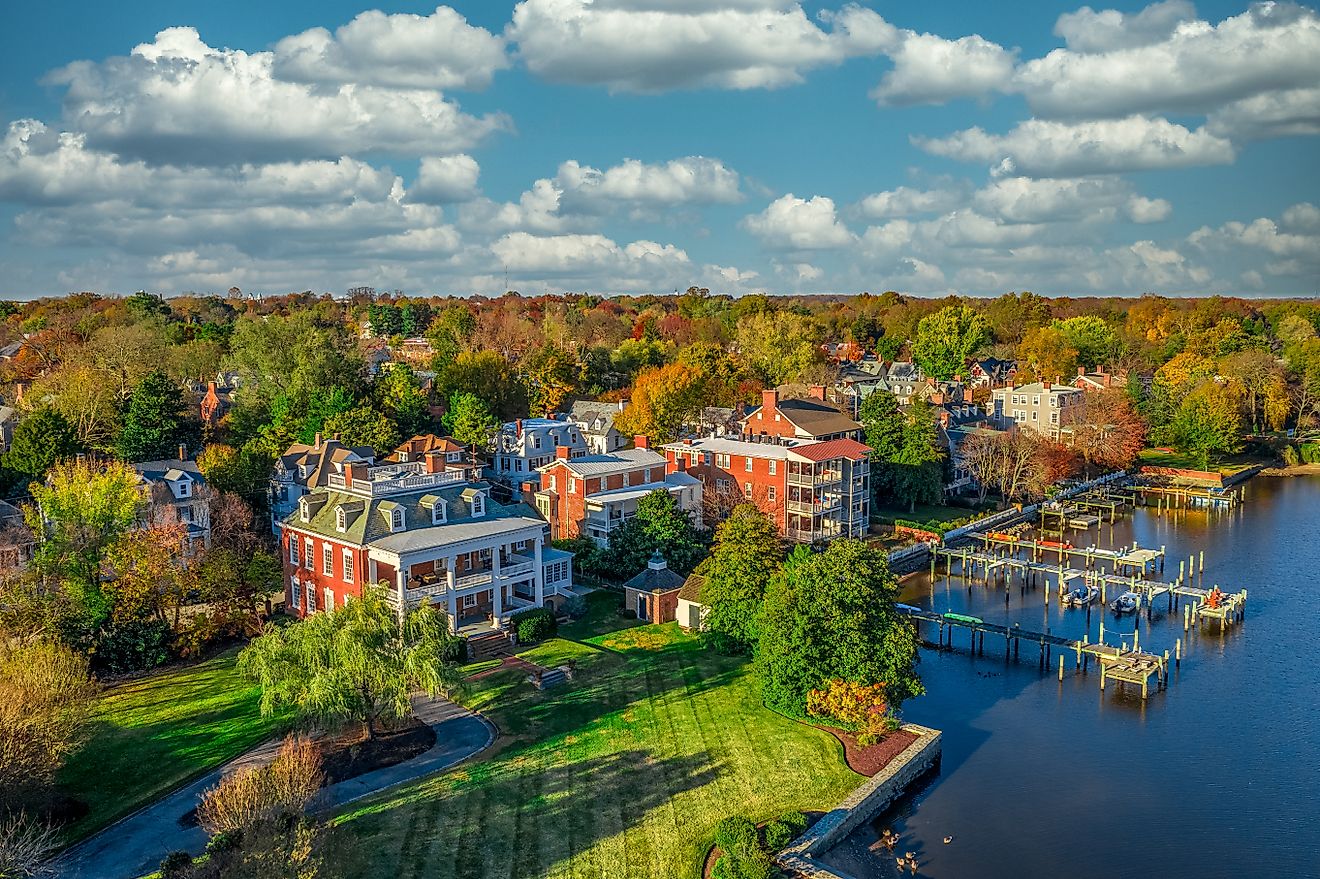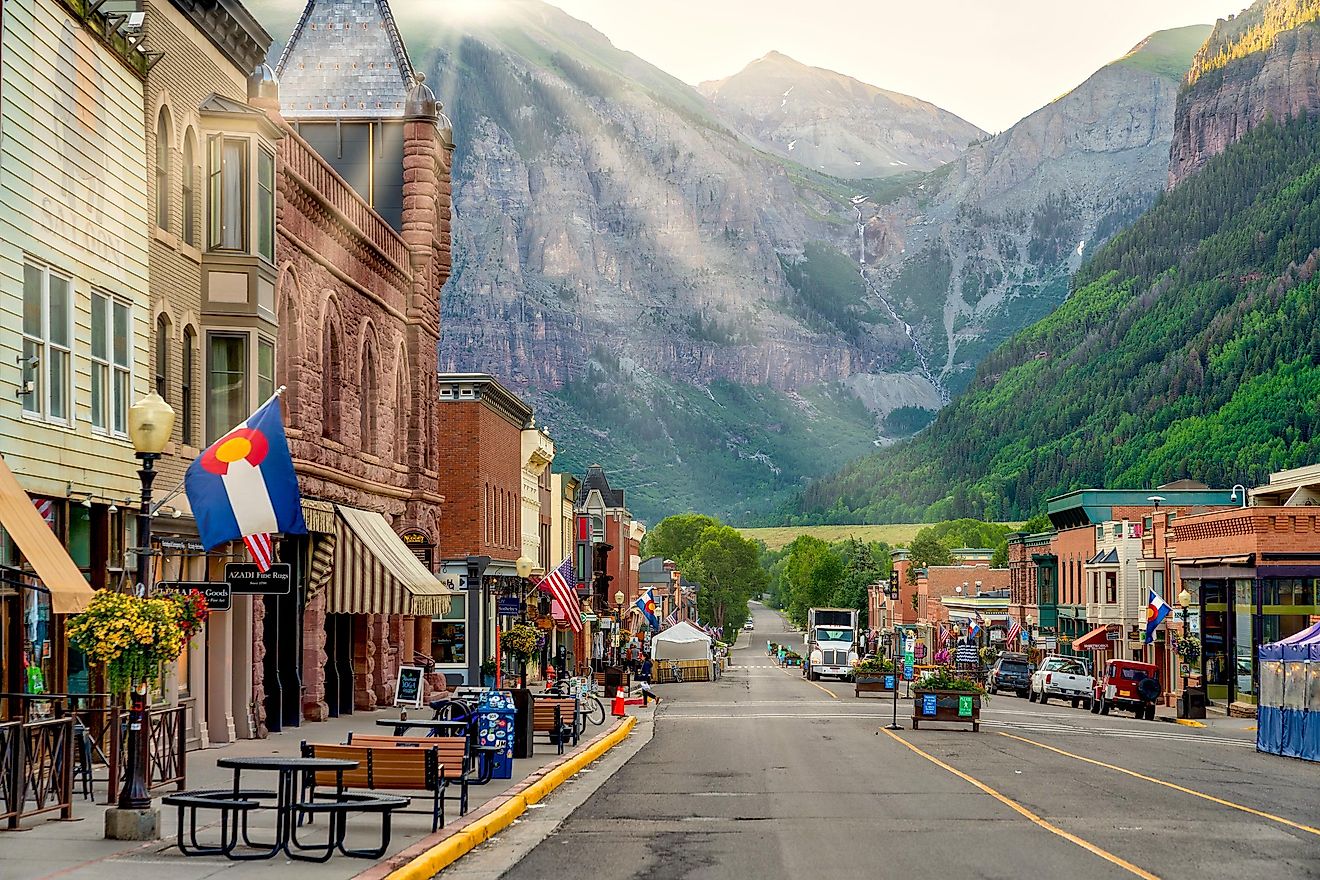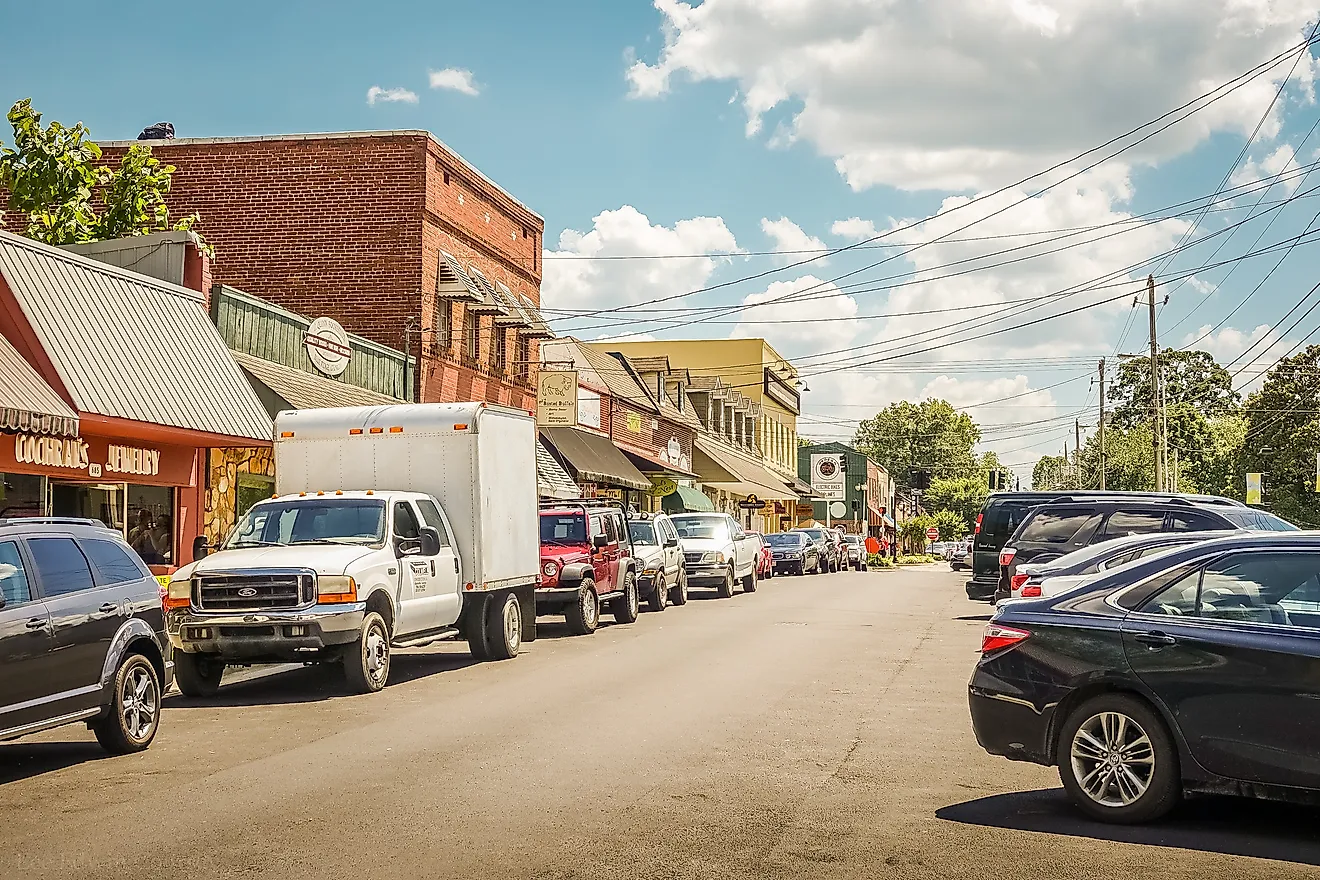Maps of Mali
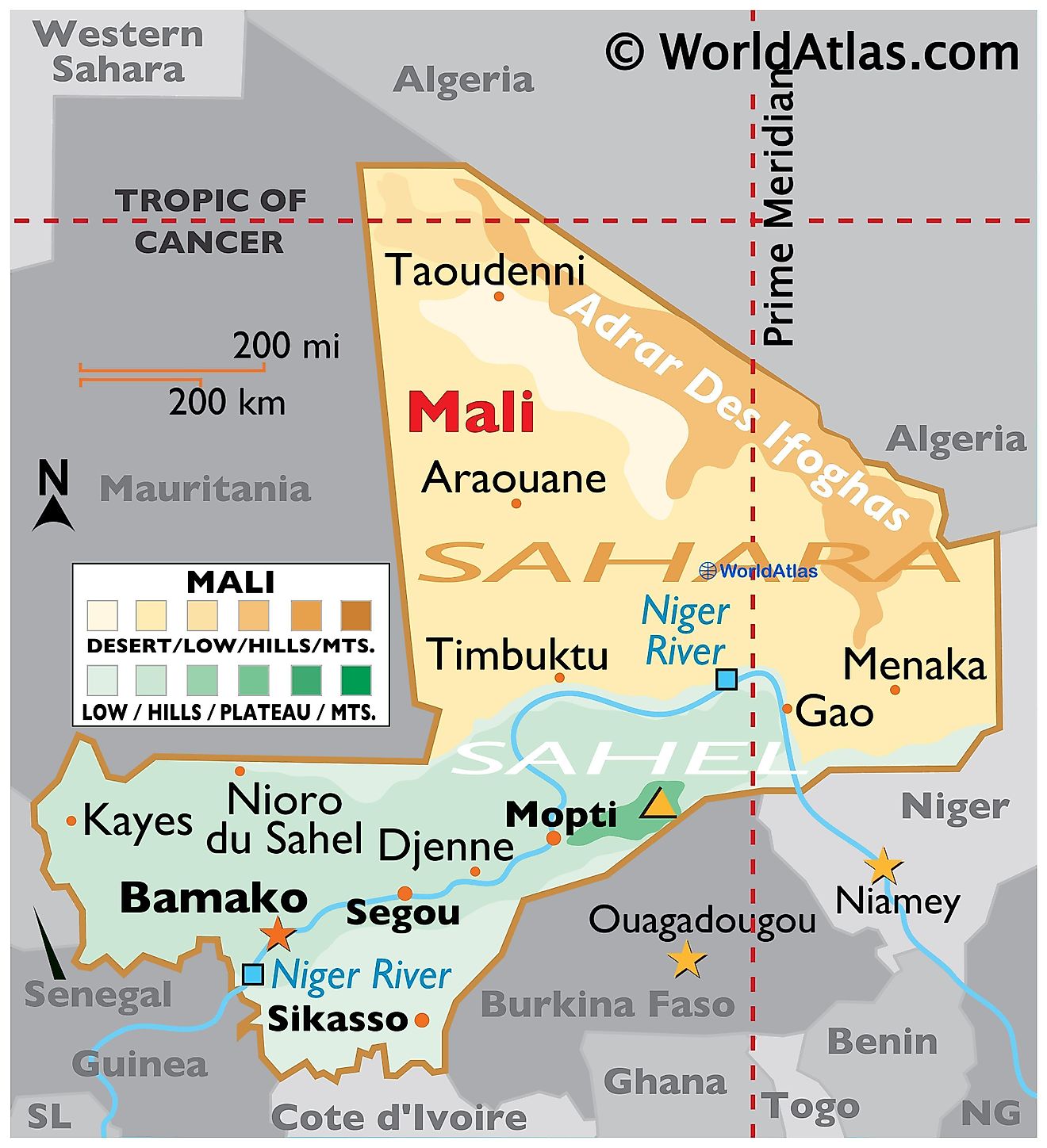
Mali is a landlocked country in West Africa with an area of 1,240,192 sq. km. Mali borders seven other nations Burkina Faso, Niger, Senegal, Guinea, Cote d'Ivoire, Algeria, and Mauritania. Approximately 65% of the country is covered by desert or semi-desert giving the nation a very distinct arid look that is common among this region of Sub-Saharan Africa. As observed on the physical map above, Mali has a monotonous landscape with plains and plateaus dominating the country's topography. The landscape transitions from the Sahara Desert in the north through the Sahel to the zone of Sudanian savanna in the south.
The Sahara Desert makes up a large portion of Mali's total land area. This part of the nation is incredibly inhospitable and is sparsely populated aside from a handful of tribal peoples who live in the area. The desert-dominated north tails off once it reaches the Niger River in the south. This region is also home to the ancient cities of Timbuktu and Gao. Mali is one of the hottest nations on earth with an average temperature of 114.8 °F (46 °C) in the summer months. It is no wonder that the fertile lands of the south are where most Malians choose to live if given the opportunity.
The Niger River serves as Mali's main source of water. Considered to be Mali's lifeblood (its source of food, drinking water, irrigation, and transportation) the Niger River snakes through roughly 4,180 km of western Africa. All of the large urban centers here are located along its banks or only a few short miles away. The capital city of Bamako is no different and can be found in the southwestern corner of Mail.
Mali's landscape is mostly a savanna grassland that rolls into higher plateaus as you move north. Rugged hills with elevations that reach upwards of 1,000 m dot the northeast. The lowest point of the country is the Senegal River at 75 ft (23 m); the highest point of Mali is Hombori Tondo at 3,789 ft (1,155 m).
Regions of Mali Map
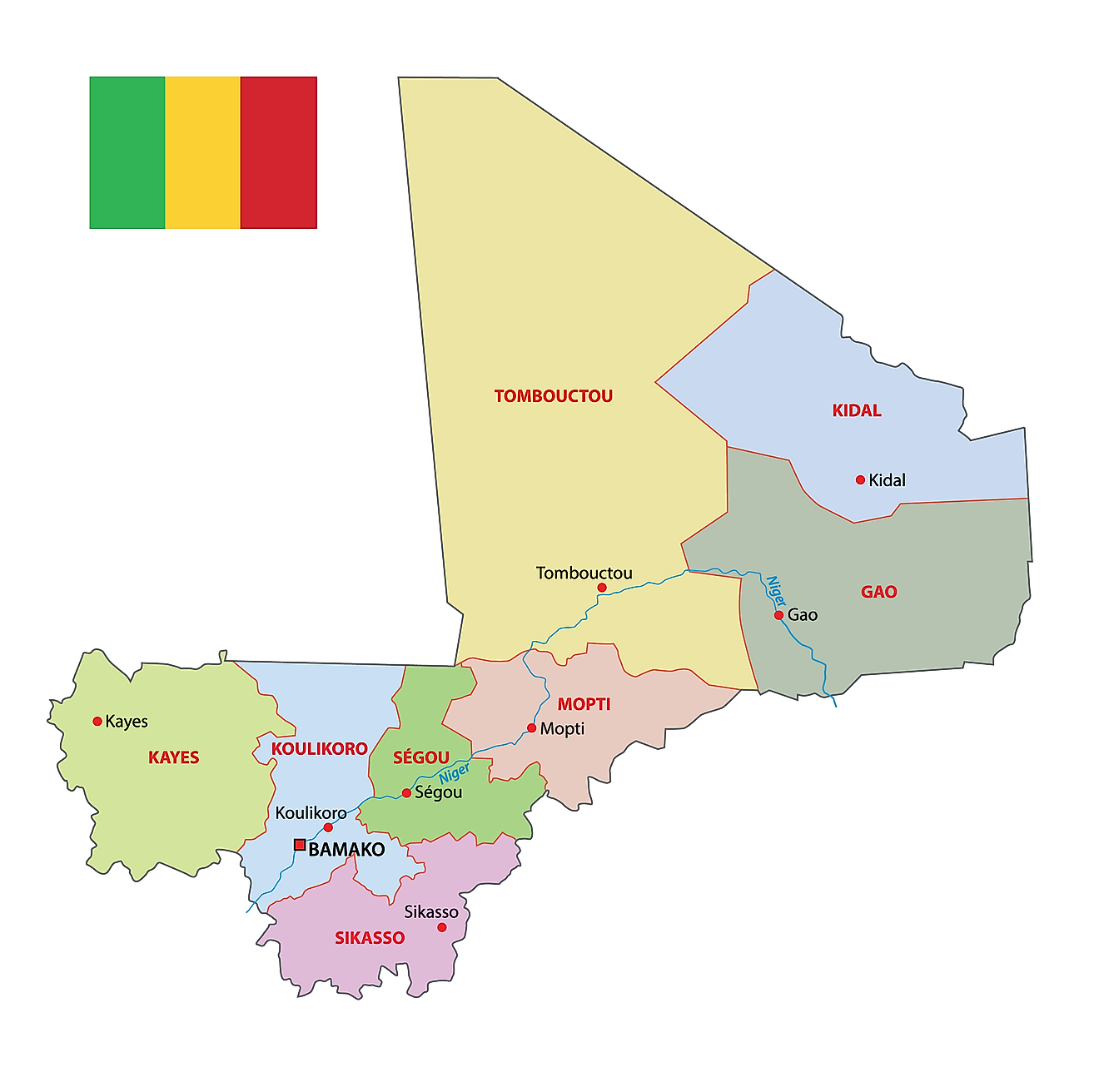
Mali has been divided into 10 administrative regions. In alphabetical order, these are as follows: Gao, Kayes, Kidal, Koulikoro, Menaka, Mopti, Segou, Sikasso, Taoudenni, Tombouctou (Timbuktu); note - Menaka and Taoudenni were legislated in 2016, but implementation has not been confirmed by the US Board on Geographic Names
The country also has one capital district, Bamako. It is the capital and largest city of Mali.
With an area of 496,611 sq. km Tombouctou is the largest region of Mali by area and Sikasso is the most populous one.
Where is Mali?
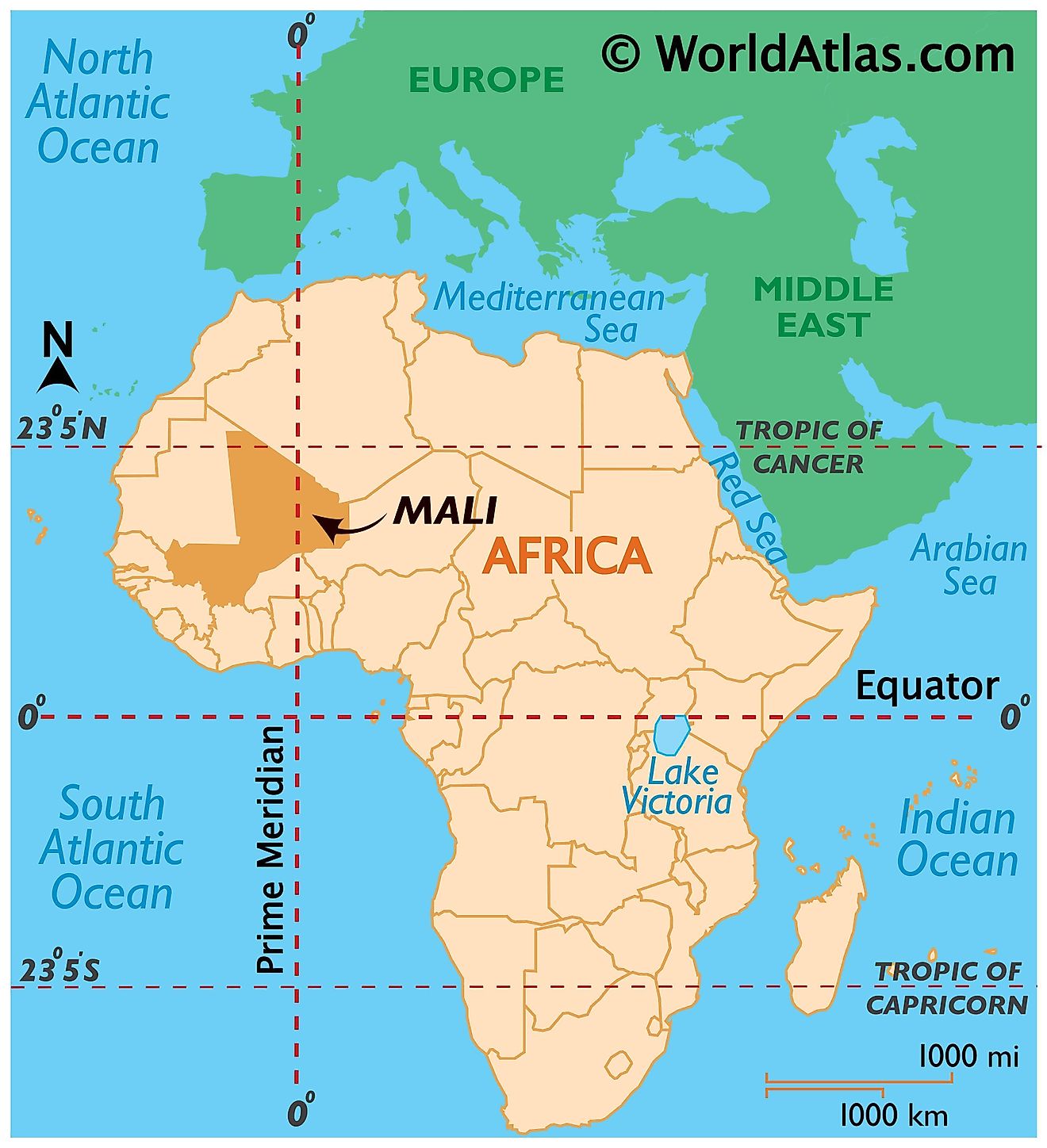
Located in West Africa, the landlocked country of Mali shares its borders with seven countries. It is located in the Northern Hemisphere. As it straddles the Prime Meridian longitude line, it has territories on both the Eastern and Western hemispheres. To the north-northeast, Mali is bordered by Algeria. Niger, Burkina Faso, and Ivory Coast border the country to the east, southeast, and south respectively. Guinea bounds Mali to the southwest, Senegal to the west, and Mauritania to the northwest.
Mali Bordering Countries: The Niger, Algeria, Burkina Faso, Senegal, Mauritania, Guinea, Cote D'Ivoire.
Regional Maps: Map of Africa
Outline Map of Mali
Key Facts
| Legal Name | Republic of Mali |
|---|---|
| Flag |
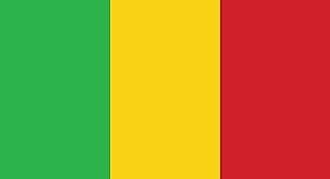
|
| Capital City | Bamako |
| 12 39 N, 8 00 W | |
| Total Area | 1,240,192.00 km2 |
| Land Area | 1,220,190.00 km2 |
| Water Area | 20,002.00 km2 |
| Population | 19,658,031 |
| Major Cities |
|
| Currency | Communaute Financiere Africaine francs (XOF) |
| GDP | $17.51 Billion |
| GDP Per Capita | $890.74 |
This page was last updated on December 7, 2023
